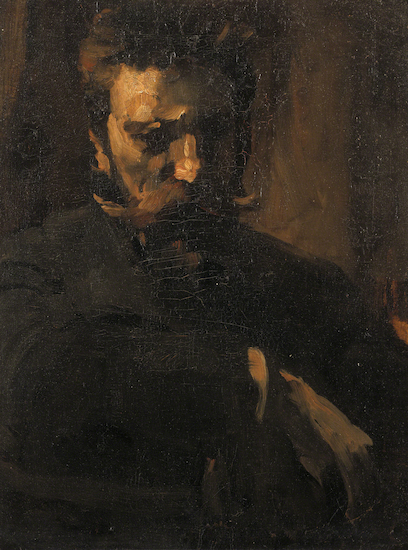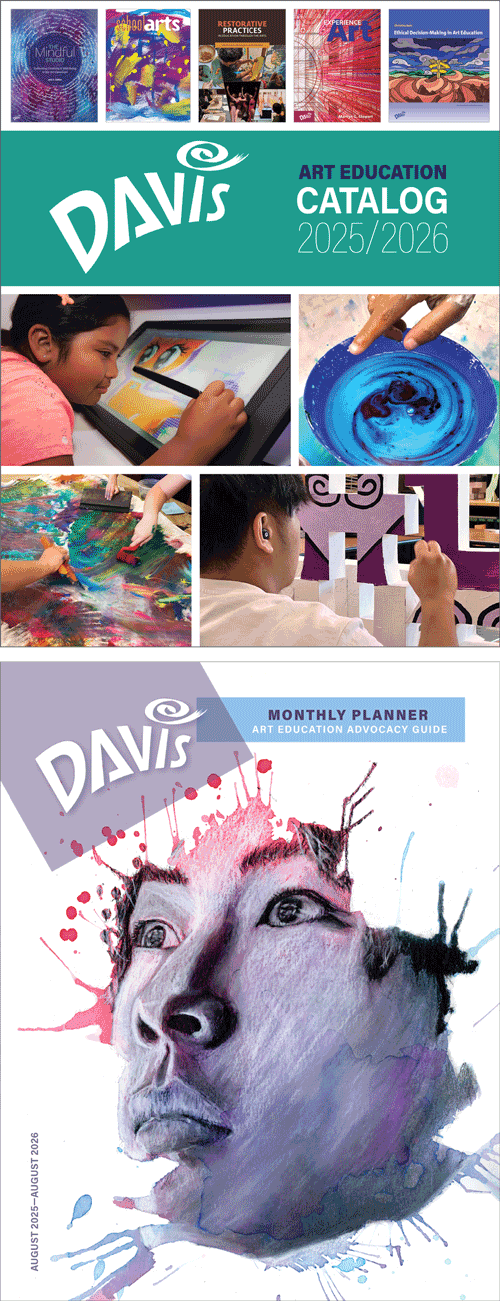Artist Birthday: Frank Duveneck
At the same time Impressionism was developing in France, a parallel movement was blossoming among American ex-patriate artists in Germany and Italy. Frank Duveneck was a pioneer in this style called Dark Impressionism which was influenced by the tenebristic (extreme contrasts in dark and light) painting of the Spanish and Italian Baroque period.
Artist Birthday for 9 October: Frank Duveneck (1848-1919 US)
 |
| Frank Duveneck, Portrait of William Merritt Chase, ca. 1876, oil on canvas, 51.1 x 38.3 cm © 2025 Philadelphia Museum of Art (PMA-2870) |
Duveneck established himself as a successful portraitist in Cincinnati and Boston and in Munich. Portraits such as this clearly show his indebtedness to Dutch Baroque portraiture, particularly that of Hals and Rembrandt. The spotlight-like contrast of dark and light (tenebrism) is common in these Dutch artists' portraits. Like the work of Rembrandt, portraits often seem to emerge from the dark, indistinct backgrounds of Duveneck's works. William Merritt Chase (1849-1916) was an American Impressionist painter who studied with Duveneck in Munich 1872 to 1878. Chase's earliest paintings mirror the Dark Impressionist style of Duveneck. After visiting Paris in 1881 and being exposed to the high key Impressionists palette, Chase thereafter painted in an Impressionist manner.
The Dutch artists who influence Dark Impressionism had been in turn influenced by the early Italian Baroque painter Caravaggio (1571-1610) and his dark, spotlit-like style. Despite the interest in the effects of light on the subject, Duveneck's palette is an academic one of earth tones, starting with a burnt sienna underpainting seen in the four corners. Such a palette led the style to be known as Dark Impressionism.
Background
Up until the first decades of the 1800s in American art, many artists went to Britain or Rome in order to study painting or sculpture in an academic setting. At the time American had no academic art schools. Even after the National Academy was founded in New York (1825) and the Pennsylvania Academy of Fine Arts in Philadelphia (1805), many American artists believed that studying the old masters in Europe was essential. Those academies were established by many of the Hudson River School artists, whose influences from European painting rested in the British tradition.
Frank Duveneck was a member of the second generation of the American school of painting. This younger generation resisted the influence of British art and the classical tradition of Rome, and looked to other burgeoning schools that were setting new trends in painting in Paris and Düsseldorf, and, after 1870, Munich. In Paris and Germany, the gritty realism of Spanish and Dutch Baroque was a more favored influence than the classicism of the Renaissance and antiquity in Rome and the romantic naturalism of British painting.
Duveneck was born to German immigrant parents in Covington, Kentucky. At an early age he showed talent in painting, decorating coaches and painting signs. At 15 he was apprenticed to a German altar-building shop in Cincinnati. He yearned, however, for formal training in painting. His teachers encouraged him to go to Munich, which had superseded Düsseldorf as an artistic center after 1870. There he could study the old masters and develop his painting style. He was the first American student there.
The large painting collection in the Gemäldegalerie in Munich contained a large group of Spanish and Dutch Baroque painting. Duveneck was particularly drawn to the work of Frans Hals (1582-1666), Rembrandt (1606-1669), and Diego Velázquez (1599-1660). He developed a loose, fluid, impasto technique in a traditional palette. Like Dutch and Spanish Baroque artists, he was interested in dramatic lighting for technical purposes rather than sentiment.

Comments